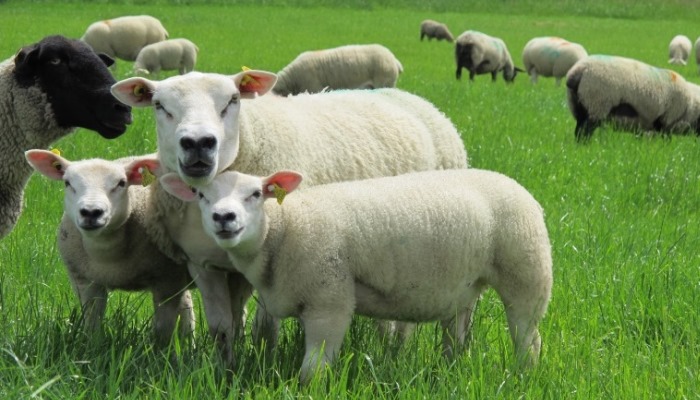01 June 2021
Preventing Blowfly strike in Sheep this summer

As we enter June with temperatures increasing, Blowfly strike prevention will be next on the agenda for sheep farmers. The Blowfly lays her eggs in the sheep’s wool, where eggs will hatch into maggots and begin to cause damage and discomfort. James Concannon, Teagasc Walsh Scholar, Mayo has more
This parasite affects sheep in the summer months but can affect sheep from April, right up until November. Female flies will lay eggs in a soiled fleece preferably as they are attracted to the smell, so dagging/crutching dirty sheep with a shears will greatly reduce the risk of Blowfly strike.
Prevention
Shearing ewes at this time will protect them for the next couple of months, so the focus is on treating lambs for the parasite. The most popular method for prevention is the use of a pour-on. Before applying pour-ons to lambs, it is important to take note of withdrawal periods of the product, usually found on the product label. Depending on the size of the lambs being treated, it is important that a farmer should consider not treating forward lambs close to slaughter. Waiting for long withdrawal dates can lead overweight lambs. There are pour-ons available with shorter withdrawal periods or crutching is another safe option.
Applying pour-ons
The main pour-on used on Irish farms is an insect growth regulator. This prevents Blowfly strike but will not be effective on lambs that have currently been struck. These pour-ons generally protect lambs from 8-19 weeks depending on the product. Withdrawal periods can range from 7-40 days. When applying the pour-on, ensure to wear gloves and a mask. It is essential that sheep are dry and clean for the most effective protection. Pour on should be applied from the neck to the rump with a fan- type nozzle on the applicator.
For more information, listen to a previous episode of Ovicast on Blowfly Control here below
You might also like to read Blowfly Control in Sheep Flocks
Teagasc Advisors are regular contributors of articles to Teagasc Daily. You can contact any of our Teagasc offices using this link Teagasc Advisory Regions here
